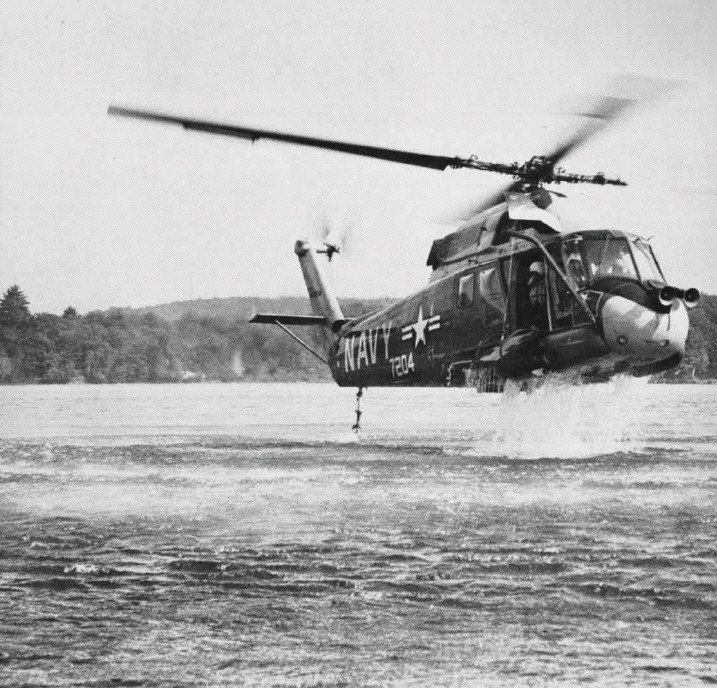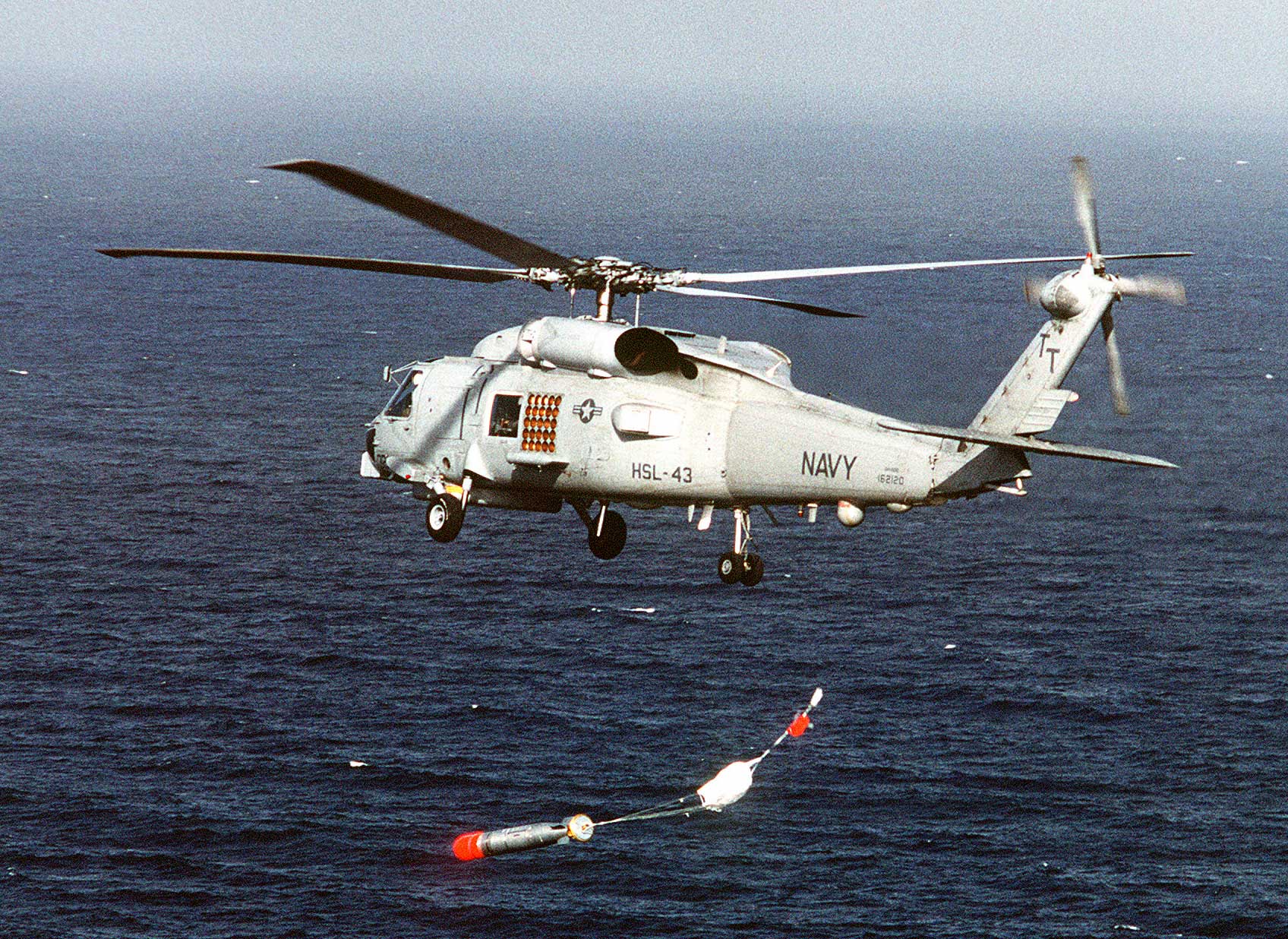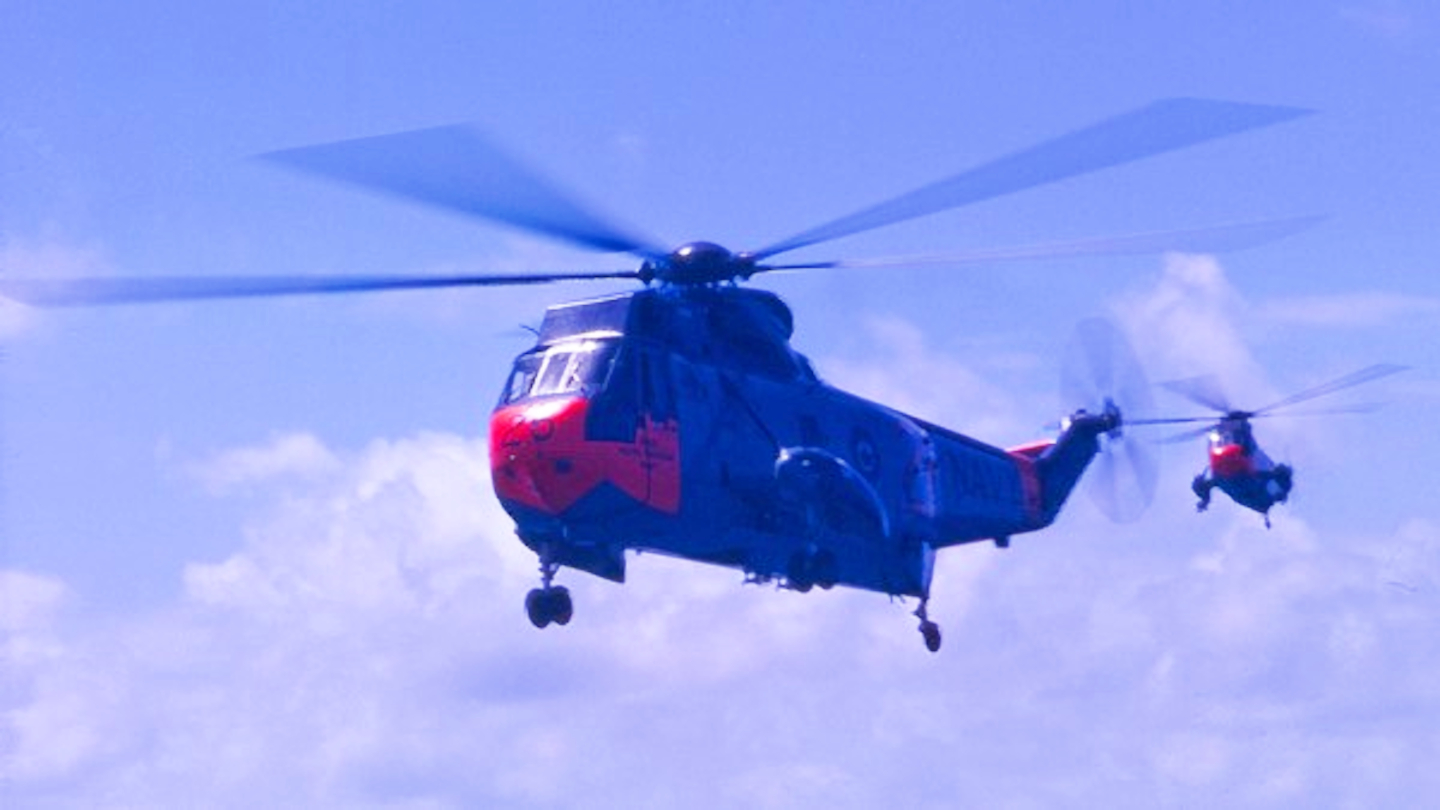|
Seasprite
The Kaman SH-2 Seasprite is a ship-based helicopter originally developed and produced by American manufacturer Kaman Aircraft, Kaman Aircraft Corporation. It has been typically used as a compact and fast-moving rotorcraft for Utility aircraft, utility and anti-submarine warfare missions. Development of the Seasprite had been initiated during the late 1950s in response to a request from the United States Navy, calling for a suitably fast and compact naval helicopter for utility missions. Kaman's submission, internally designated as the ''K-20'', was favourably evaluated, leading to the issuing of a contract for the construction of four prototypes and an initial batch of 12 production helicopters, designated as the ''HU2K-1''. Under the 1962 United States Tri-Service aircraft designation system, the HU2K was redesignated H-2, the HU2K-1 becoming the UH-2A. Beyond the U.S. Navy, the company had also made efforts to acquire other customers for export sales, in particular the Royal C ... [...More Info...] [...Related Items...] OR: [Wikipedia] [Google] [Baidu] |
Kaman SH-2G Super Seasprite
The Kaman SH-2G Super Seasprite is an American ship-based helicopter with anti-submarine, anti-surface threat capability, including over-the-horizon targeting. This aircraft extends and increases shipboard sensor and weapon capabilities against several types of enemy threats, including submarines of all types, surface ships, and patrol craft that may be armed with anti-ship missiles. It was originally developed for the United States Navy in 1980s as a reengined version of the older Kaman SH-2 Seasprite. The SH-2G's primary missions include anti-submarine and anti-surface warfare, anti-ship missile defense, and anti-ship surveillance and targeting. Secondary missions may include medical evacuation, search and rescue, personnel and cargo transfer, as well as small boat interdiction, amphibious assault air support, gun fire spotting, mine detection and battle damage assessment. Design and development In 1985, the SH-2G program was started. The US Navy wanted better anti-subma ... [...More Info...] [...Related Items...] OR: [Wikipedia] [Google] [Baidu] |
Kaman Aircraft
Kaman Corporation is an American aerospace company, with headquarters in Bloomfield, Connecticut. It was founded in 1945 by Charles Kaman. During the first ten years the company operated exclusively as a designer and manufacturer of several helicopters that set world records and achieved many aviation firsts. In 1956, Kaman began to diversify as an aerospace subcontractor of McDonnell Douglas, Grumman, and others. In the mid-1960s Kaman diversified outside of the aerospace industry, using the expertise Kaman had gained in composite materials and the end of the need for skilled woodworkers to craft wooden rotor blades. Charles Kaman, a guitarist as well as an aerospace pioneer, worked with his engineers and other musicians to create the round-backed, composite-body Ovation guitar, which led to the eventual creation of Kaman Music (now KMCMusicorp). Kaman Music was an independent distributor of musical instruments and accessories, and a major producer of guitars and guitar parts ... [...More Info...] [...Related Items...] OR: [Wikipedia] [Google] [Baidu] |
Royal New Zealand Air Force
The Royal New Zealand Air Force (RNZAF) ( mi, Te Tauaarangi o Aotearoa, "The Warriors of the Sky of New Zealand"; previously ', "War Party of the Blue") is the aerial service branch of the New Zealand Defence Force. It was formed from New Zealand elements of the British Royal Air Force, becoming an independent force in 1923, although many RNZAF aircrew continued to serve in the Royal Air Force until the end of the 1940s. The RNZAF fought in World War II, Malaya, Korean War, Vietnam and the Gulf War as well as undertaking various United Nations peacekeeping missions. From a 1945 peak of over 1,000 combat aircraft the RNZAF has shrunk to a strength of around 48 aircraft in 2022, focusing on maritime patrol and transport duties in support of the Royal New Zealand Navy and the New Zealand Army. The RNZAF's air combat capability ended in 2001, under the Fifth Labour Government with the disbanding of the A-4 Skyhawk and Aermacchi MB-339 based squadrons. The Air Force is led by an Ai ... [...More Info...] [...Related Items...] OR: [Wikipedia] [Google] [Baidu] |
Light Airborne Multi-Purpose System
The Light Airborne Multi-Purpose System (LAMPS) is the United States Navy's program that develops crewed helicopters to assist the surface fleet in anti-submarine warfare. The purpose of LAMPS is to scout outside the limits of a fleet's radar and sonar range to detect and track enemy submarines or missile-equipped escort ships and feed the real-time data back to their LAMPS mothership. They also have the capability to directly engage enemy targets with depth charges or torpedoes, or indirectly engage the enemy by coordinating fleet assets on site. A Mk II version was planned, but was canceled in favor of the more advanced Mk III. LAMPS III added the capabilities to use anti-ship missile systems (like the AGM-119 Penguin anti-ship missile) and night vision capability. History In October 1970, the UH-2 was selected to be the platform to function as the interim Light Airborne Multi-Purpose System (LAMPS) helicopter.Frawley 2002, p. 100. During the course of the 1960s, LAMP ... [...More Info...] [...Related Items...] OR: [Wikipedia] [Google] [Baidu] |
Sikorsky SH-60 Sea Hawk
The Sikorsky SH-60/MH-60 Seahawk (or Sea Hawk) is a twin turboshaft engine, multi-mission United States Navy helicopter based on the United States Army UH-60 Black Hawk and a member of the Sikorsky S-70 family. The most significant modifications are the folding main rotor and a hinged tail to reduce its footprint aboard ships. The U.S. Navy uses the H-60 airframe under the model designations SH-60B, SH-60F, HH-60H, MH-60R, and MH-60S. Able to deploy aboard any air-capable frigate, destroyer, cruiser, fast combat support ship, expeditionary transfer dock, amphibious assault ship, littoral combat ship or aircraft carrier, the Seahawk can handle anti-submarine warfare (ASW), anti-surface warfare (ASUW), naval special warfare (NSW) insertion, search and rescue (SAR), combat search and rescue (CSAR), vertical replenishment (VERTREP), and medical evacuation (MEDEVAC). Design and development Origins During the 1970s, the U.S. Navy began looking for a new helicopter to replace the Kam ... [...More Info...] [...Related Items...] OR: [Wikipedia] [Google] [Baidu] |
General Electric T58
The General Electric T58 is an American turboshaft engine developed for helicopter use. First run in 1955, it remained in production until 1984, by which time some 6,300 units had been built. On July 1, 1959, it became the first turbine engine to gain FAA certification for civil helicopter use. The engine was license-built and further developed by de Havilland in the UK as the Gnome, in the West Germany by Klöckner-Humboldt-Deutz, and also manufactured by Alfa Romeo and the IHI Corporation. Design and development Development commenced with a 1953 US Navy requirement for a helicopter turboshaft to weigh under 400 lb (180 kg) while delivering 800 hp (600 kW). The engine General Electric eventually built weighed only 250 lb (110 kg) and delivered 1,050 hp (780 kW) and was soon ordered into production. First flight was on a modified Sikorsky HSS-1 in 1957, and civil certification for the CT58-100 variant was obtained two years later. A number ... [...More Info...] [...Related Items...] OR: [Wikipedia] [Google] [Baidu] |
Sikorsky CH-124 Sea King
The Sikorsky CH-124 Sea King is a twin-engined anti-submarine warfare (ASW) helicopter designed for shipboard use by Canadian naval forces, based on the US Navy's SH-3. It served with the Royal Canadian Navy (RCN) and Canadian Armed Forces from 1963 to 2018. Design and development The advent of nuclear-powered submarines in the late 1950s let to the RCN assessing this new threat. While noisier than older submarines and thus detectable at longer ranges, nuclear submarines could also reach while submerged, faster than the RCN's new destroyer escort's top speed of . There were doubts that destroyers could effectively pursue and destroy such fast vessels, even when operating in pairs. During a 25 February 1959 Naval Board meeting, it was decided to counter the threat by operating helicopters from destroyers.Soward 1995, pp.169–171. The RCN examined the feasibility of operating ASW helicopters from small escorts, adding a temporary helicopter landing platform to the in mid-19 ... [...More Info...] [...Related Items...] OR: [Wikipedia] [Google] [Baidu] |
Plane Guard
A plane guard is a warship (commonly a destroyer or frigate) or helicopter tasked to recover the aircrew of planes or helicopters which ditch or crash in the water during aircraft carrier flight operations. Ships For ships, the plane guard is positioned at least 500 yards behind the carrier and either to port and clear of the carrier, or at a point intersecting the carrier's final approach line. Ships in the latter position provide an additional point of reference to approaching aircraft. One of the ship's boats is prepared for launch and swung over the side, but not placed in the water. If an aircraft ditches or crashes, either while approaching the carrier to land or following a failed landing, the ship proceeds to the approximate position of the aircraft, and the prepared boat is deployed to rescue the aircrew. The plane guard role is dangerous for ships, as aircraft carriers must often change speed and direction to preserve optimum take-off and landing conditions for their ai ... [...More Info...] [...Related Items...] OR: [Wikipedia] [Google] [Baidu] |
Aircraft Carrier
An aircraft carrier is a warship that serves as a seagoing airbase, equipped with a full-length flight deck and facilities for carrying, arming, deploying, and recovering aircraft. Typically, it is the capital ship of a fleet, as it allows a naval force to project air power worldwide without depending on local bases for staging aircraft operations. Carriers have evolved since their inception in the early twentieth century from wooden vessels used to deploy balloons to nuclear-powered warships that carry numerous fighters, strike aircraft, helicopters, and other types of aircraft. While heavier aircraft such as fixed-wing gunships and bombers have been launched from aircraft carriers, these aircraft have not successfully landed on a carrier. By its diplomatic and tactical power, its mobility, its autonomy and the variety of its means, the aircraft carrier is often the centerpiece of modern combat fleets. Tactically or even strategically, it replaced the battleship in the ro ... [...More Info...] [...Related Items...] OR: [Wikipedia] [Google] [Baidu] |
Foreign Aid
In international relations, aid (also known as international aid, overseas aid, foreign aid, economic aid or foreign assistance) is – from the perspective of governments – a voluntary transfer of resources from one country to another. Aid may serve one or more functions: it may be given as a signal of diplomatic approval, or to strengthen a military ally, to reward a government for behavior desired by the donor, to extend the donor's cultural influence, to provide infrastructure needed by the donor for resource extraction from the recipient country, or to gain other kinds of commercial access. Countries may provide aid for further diplomatic reasons. Humanitarian and altruistic purposes are often reasons for foreign assistance. Aid may be given by individuals, private organizations, or governments. Standards delimiting exactly the types of transfers considered "aid" vary from country to country. For example, the United States government discontinued the reporting of mi ... [...More Info...] [...Related Items...] OR: [Wikipedia] [Google] [Baidu] |
Treasury Board
The Treasury Board of Canada (french: Conseil du Trésor du Canada) is the Cabinet committee of the Privy Council of Canada which oversees the spending and operation of the Government of Canada and is the principal employer of the core public service. The committee is supported by the Treasury Board of Canada Secretariat, its administrative branch and a department within the government itself. The committee is chaired by the president of the Treasury Board, currently Mona Fortier, who is also the minister responsible for the Treasury Board of Canada Secretariat. Role The Canadian Cabinet is arranged into several committees with varying responsibilities, but all other ones are informal structures and frequently change. Currently organized under the ''Financial Administration Act'', the Treasury Board is the only one created by law and is officially a committee of the Privy Council. Its role in government makes it far more powerful than most Cabinet committees as it is responsib ... [...More Info...] [...Related Items...] OR: [Wikipedia] [Google] [Baidu] |




